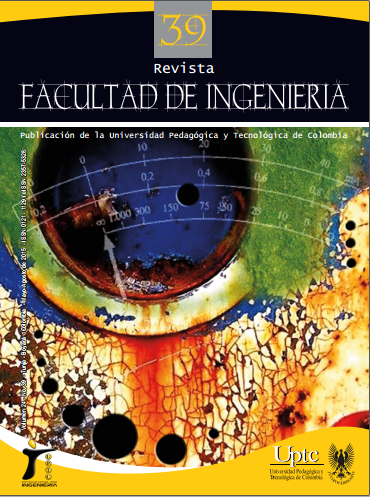Electronic control arm using electromyographic signals

Abstract
The studies focused in pattern extractions of electromyography signals (SEMG) has been growing, due to their multiple applications. This paper presents an electronic system implementation for the SEMG recording of a subject upper extremity in order to remotely control an electronic arm. Initially, we performed a signals preprocessing, to remove the less important information and to recognize the interest areas. Then the patterns were extracted and classified. The techniques used were: The wavelet analysis (AW), the principal components analysis (PCA), the Fourier transformed (FT), the discrete cosine transformed (DCT), the support vector machines (SVM) and the artificial neural networks (ANR). In this paper we demonstrated, that the methodology stated, allows to realize a process of classification with a superior performance to 95%. There were recorded more than four thousands signals.Keywords
electronic arm control, electromyography, ANR, SVM, patterns extraction, wavelet transformed
References
- A.H. Al-Timemy, G. Bugmann, J. Escudero and N. Outram, N. “Classification of Finger Movements for the Dexterous Hand Prosthesis Control With Surface Electromyography”. Biomedical and Health Informatics, IEEE Journal. Vol. 17, pp. 608-618. 2013.
- L. Jizhou, Z. Yongjin and Z. Yong-Ping. “An indirect method to estimate the force output of triceps surae muscle”. Engineering in Medicine and Biology Society (EMBC), 36th Annual International Conference of the IEEE. pp. 5832-5835. 2014.
- Z. Xiaodong and L. Haojie. “Study on Measurement and Processing Technology of Electromyography”. Electronic Measurement and Instruments. pp. 1033-1036. 2007.
- R. Liye, W. Xiaoli and W. Xiao. “Research of Feature Extraction Method for Stroke Patients’ Surface Electromyography”. Intelligent Networks and Intelligent Systems (ICINIS). pp. 322-324. 2012.
- L. Zhizeng, W. Fei and M. Wenjie. “Pattern Classification of Surface Electromyography Based on AR Model and High-order Neural Network”. Mechatronic and Embedded Systems and Applications. pp 1-6. 2006.
- G. Yang and S. Yang. “Emotion Recognition of Electromyography Based on Support Vector Machine”. Intelligent Information Technology and Security Informatics (IITSI). pp. 298-301. 2010.
- J. Taelman, S. Van Huffel and A. Spaepen, “Wavelet-Independent Component Analysis to Remove Electrocardiography Contamination in Surface Electromyography”. Engineering in Medicine and Biology Society. pp 682-685. 2007.
- K. Kuribayashi, S. Shimizu, K. Okimura and T. Taniguchi, “A discrimination system using neural network for EMG-controlled prostheses-Integral type of EMG signal processing”. Intelligent Robots and Systems ‘93, IROS ‘93. Proceedings IEEE/RSJ International Conference, vol. 3 (26), pp.1750-1755. 1993.
- A. Salman, J. Iqbal, U. Izhar, U.S. Khan and N. Rashid, “Optimized circuit for EMG signal processing”. Robotics and Artificial Intelligence (ICRAI), 2012 International Conference. pp. 208-213. 2012.
- L. Marie-Françoise, S. Adrien Gaufriau, D. F. Christian Doncarli. “Multi-channel surface EMG classification using support vector machines and signal-based wavelet optimization”, Biomedical Signal Processing and Control, Vol. 3. 2008.
- J.L.G. Nielsen, S. Holmgaard, J. Ning Jiang; K. Englehart, D. Farina, P. Parker, “Enhanced EMG signal processing for simultaneous and proportional myoelectric control”. Engineering in Medicine and Biology Society, 2009. EMBC 2009. Annual International Conference of the IEEE, pp. 4335-4338, Sept. 2009.
- K. HeeSu, R. Kiwon, Y. Kyoung-jin, S. Hyun-chool, “Intuitive robot navigation using wireless EMG and acceleration sensors on human arm”. Intelligent Signal Processing and Communications Systems (ISPACS), 2011 International Symposium, vol. 7(9), pp. 1-4 Dec. 2011.
- W. Xinqing, L. Yiwei, Y. Dapeng, L. Nan, L. Jiang, L. Hong, “Progress in the biomechatronic design and control of a hand prosthesis”. Intelligent Robots and Systems (IROS), 2010 IEEE/RSJ International Conference, pp. 5880-5885. 2010.
- J. Z. Wang, R.C. Wang, F. Li, M. W. Jiang, D. W. Jin, “EMG Signal Classification for Myoelectric Teleoperating a Dexterous Robot Hand”. Engineering in Medicine and Biology Society, 2005. IEEE-EMBS 2005. 27th Annual International Conference, vol. 7(9), pp. 5931-5933, Jan. 2006.
- J.C. González-Ibarra, C. Soubervielle-Montalvo, O. Vital-Ochoa, H. G. Pérez-González, “EMG Pattern Recognition System Based on Neural Networks”. Artificial Intelligence (MICAI), 11th Mexican International Conference. pp. 71-74. 2012.
- Y. Zhi-guo, W. Zhi-zhong, R. Xiao-mei. “Joint application of feature extraction based on EMDAR strategy and multi-class classifier based on LS-SVM in EMG motion classification”. Journal of Zhejiang University SCIENCE, vol. 8(8), pp. 1246-1255. 2007.
- M. Galli, V. Cimolin, V. Crugnola, L. Priano, F. Menegoni, C. Trotti, E. Milano, A. Mauro. “Gait pattern in myotonic dystrophy (Steinert disease): A kinematic, kinetic and EMG evaluation using 3D gait analysis”. Journal of the Neurological Sciences. vol. 314(1–2), pp. 83–87. 2012.
- A. Subasi. “Classification of EMG signals using PSO optimized SVM for diagnosis of neuromuscular disorders”. Computers in Biology and Medicine, vol. 43 (5), pp. 576–581. 2013.
- A. Alkan, M. Günay. “Expert Systems with Applications Identification of EMG signals using discriminant analysis and SVM classifier”, vol. 39 (1), pp. 44-47. 2012.
Downloads
Download data is not yet available.